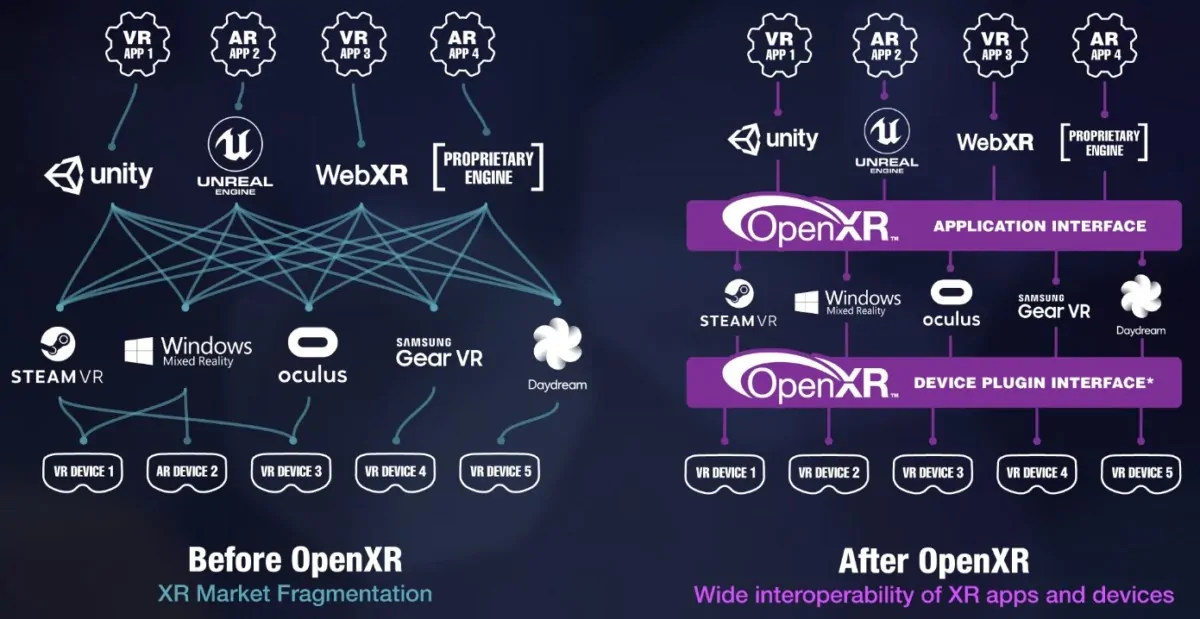Competition brings about markets that are full of choices for consumers and generally makes the market a more consumer-friendly place. As with any new type of technology or product, AR and VR technologies have been quite fragmented from the start, with various groups or companies trying to push their own platform as the leader or the pioneer. The Khronos Group has announced that it’s releasing version 1.0 of OpenXR, the new standard for augmented reality (AR) and virtual reality (VR) is designed to bridge the gap between all the engines and head-mounted displays (HMD) on the market now.
If you’ve heard the name Khronos before, it’s because this is the same group behind other industry-standard application programming interfaces (API) like Vulkan, which has made a massive difference in how games on all platforms (especially mobile) perform. OpenXR, as a concept, is not new. It was first unveiled 2 years ago, but it takes time to create a standardized API that everyone agrees on, and it looks like Khronos was able to get basically everyone in the industry on board.
As you can see in the image below, The Khronos Group was able to assemble all the greatest minds and biggest players in the industry to come up with a standard input language that developers can use to create games and applications in AR or VR that will work with just about every possible headset out there. As with any development language, this is not necessarily just a plug-and-play process on the part of the developer, but it opens the door to greater cross-platform development and breaks down barriers that proprietary APIs and software create.

As an example, many on the PC VR community were frustrated with the way Oculus handled their consumer variant rollout of the Oculus Rift, particularly when it comes to the Oculus Home store and exclusives. While Oculus relaxed its Digital Rights Management (DRM) restrictions that were in place at launch, it’s still overly difficult to use non-Oculus branded HMDs, like the HTC Vive or Valve Index, when trying to play anything from the Oculus Store.
With OpenXR, developers can create titles in this new language that can be more easily released on multiple platforms and stores without the confusion and frustration that comes with exclusive partnerships or required software installations.
The same goes with the AR scene, which has some pretty severe fragmentation issues, depending on which device you’re using. Most modern Android flagships support Google’s AR Core, and all recent iPhones support Apple’s AR Kit, but developers haven’t had a more simple way of developing for multiple platforms without considerable development using multiple tools and tests at once.
While Apple is, unsurprisingly, not part of the final OpenXR specification, all other notable companies are and, as a result, should help see a significant decrease in development difficulty and, ultimately, an increase in the amount of quality software available to consumers who want the freedom of being able to choose the best device for their needs.
OpenXR updates are shipping this week, including Collabora’s ‘Monado’ implementation, OpenXR for Windows Mixed Reality headsets, Oculus OpenXR for Rift and Oculus Quest, as well as OpenXR in Unreal Engine. Don’t expect a massive influx of games next week or anything, rather, expect that development going forward will likely see a big increase in cross-platform availability for consumers over the course of the next several years.

